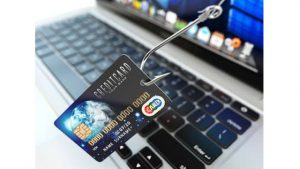 Phishing in the cybercrime world is by far one of the most common methods to gain access to your sensitive information. Cyber criminals are known to be notoriously lazy and will find the easiest way to get access to your information.
Phishing in the cybercrime world is by far one of the most common methods to gain access to your sensitive information. Cyber criminals are known to be notoriously lazy and will find the easiest way to get access to your information.
The word phishing is a homophone of ‘fishing’, which involves a “hook, bait and sinker” literally.
It is an attempt by cyber criminals to obtain personal and financial information such as passwords, credit card or account information by deception. They create fictitious entities and persons in an email, IM or other communication channels.
Usually, the ‘hook’ is an email message that appears to have been sent by a familiar contact or company. When that attachment or link — the ‘bait’ — is opened it normally installs malware on the user’s device or directs them to a fictitious website. The ‘sinker’ is the trick where you reveal your personal and financial information, such as passwords, credit card or account information.
This practice is prevalent with cyber criminals as it is easier to trick someone rather than trying to gain access through a computer’s security shield.
Here are five tips that can help you in identifying and preventing phishing attacks:
1. Phishing campaigns are often launched around major events
Look out for campaigns around holidays, birthdays, breaking news and stories both true and fictitious. Yes, they will know your birthday, think Facebook!
2. Language is not a barrier
Phishing campaigns can target you in any language. They are usually appallingly translated or written.
3. Promise of gifts and copious amounts of money
Beware of promises of gifts, monies and earnings through different communication channels that are often not conceivable. This is the ‘hook’ you want to avoid. Live by the old adage of “A promise is a comfort to a fool”.
4. Do not click on suspicious links embedded in emails
Duplicating a company’s website, logo and information is easy, after all, the information is in the public domain. Therefore, if you receive any suspicious emails with links, attachments or directing you to a website specifically from your bank and/or a company you are/have done business with, give them a call before opening the links.
5. A secure website is a must!
Enter your personal and financial information, passwords and account information into a secure website only. In order for a website to be secure it must begin with ‘https://’ and your browser should show a closed ‘lock icon’.
Extensive research has been done by cyber criminals to know what key terms and phrases to use to pull information out of users. To prevent this, keep up to date with the various phishing attempts and look out for any irregularities. If you have the slightest doubt, do not RISK it!
